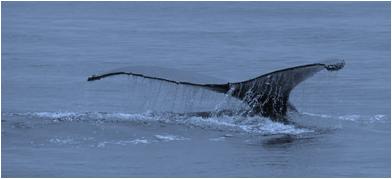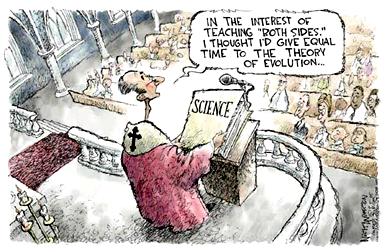[click on title to be redirected to The Standard Times]
Dr. Guillermo Paz-y-Miño C. — © 2010
Department of Biology, University of Massachusetts Dartmouth
History is evolution and evolution is history.
 Charles Darwin (photo © left G. Paz-y-Miño C. 2010, British Museum of Natural History, London) felt enthralled when discovering the benefits of earthworms to archeology. In his 1881 book, “The Formation of Vegetable Mould Through the Action of Worms,” he dedicated a chapter to “the part which worms have played in the burial of ancient buildings.” Darwinianly, he wrote —¦ archeologists are probably not aware how much they owe to worms for the preservation of “¦ ancient objects.”
Charles Darwin (photo © left G. Paz-y-Miño C. 2010, British Museum of Natural History, London) felt enthralled when discovering the benefits of earthworms to archeology. In his 1881 book, “The Formation of Vegetable Mould Through the Action of Worms,” he dedicated a chapter to “the part which worms have played in the burial of ancient buildings.” Darwinianly, he wrote —¦ archeologists are probably not aware how much they owe to worms for the preservation of “¦ ancient objects.”
Indeed, while tunneling in the dirt, earthworms soften the substrate and hide artifacts that otherwise would remain on the surface. Iron arrowheads, probably from the Battle of Shrewsbury in 1403, were, according to Darwin, preserved in this fashion by the aid of worms.
Superficial archeological ruins at Abinger (130-360s AD), Chedworth (350s AD), Brading (330s AD), and other vestiges of Roman occupation to Britannia have been concealed by the burring labor of earthworms. But Darwin clarified that —¦ the enormous beds of rubbish, several yards in thickness, which underlie many cities, such as Rome, Paris, and London “¦ have not been “¦ acted on by worms.”
As much as archeological information has been trapped underground — from earlier times located close to the surface to ancient epochs hidden deep — biological history is also preserved in the geological profile, from the Holocene (today) to the Cambrian (550 million years ago), when biodiversity fossilized vastly, and to the early Archaean (3.5 billion years ago), when colonial cyanobacteria carved rocks.
And as much as erosion disfigures the archeological record, the biological testimony is fragmentary to scientists. Both archaeological and biological treasures require ideal conditions for preservation. The majestic Roman Colosseum (photo © G. Paz-y-Miño C. 2010, below), for example, has battled gravity, rain and wind for two millennia.

Similarly, human bones from the Upper Paleolithic still remained identifiable to paleoanthropologists after 35,000 years of entombment in Abri de Cro Magnon, in Southern France. Like the Roman Colosseum, the aged fossils had lost essential features, but they existed and were (are) real.
It is here, at the point of recalling the dawn of Rome and the death of life forms in the process of leaving progeny — like the Cro-Magnons — where human logic faces the test. Denying biological evolution parallels with repudiating history. The antecedents of the Roman Empire are connected to its people, whose prosperous culture, technological pride and understanding of government were linked, historically, to simpler beginnings of the human condition, when hunter-gatherers strategized daily survival.

Photo above from Human Origins Gallery at Smithsonian National Museum of Natural History (click on image to access site)
No rational citizen of the contemporary world would challenge the existence of ancient Rome, but 40 percent of Americans, 18 percent of the British, and 20 percent of Italians, among residents of 34 other countries where public acceptance of evolution has been polled (Science, 2006), think evolution is false. This discrepancy between wide acceptance of Roman history and selective rejection of life’s past resides in the extra scrutiny imposed on the latter by religion.
In the United States of America, negative attitudes toward evolution correlate with three variables: religious beliefs, pro-life beliefs and political ideology. Conservative Republicans accept evolution less than progressive liberals and independents (30 vs. 60 percent, respectively) and frequency of religious practices is associated negatively with acceptance of evolution (24 percent among weekly church-goers vs. 71 percent for seldom or never, Gallup Poll, 2007).
Only science education improves evolution literacy; in fact, public acceptance of evolution in the United States increases from the high-school level (21 percent), to the some-college (41 percent), college-graduate (53 percent) and post-graduate levels (74 percent), reaching the highest among university professors (97 percent) (see histogram below). Young Earth Creationists, who believe that humans were designed in the present form within the last 10,000 years, coincide with the views of the least educated population of adolescents in their teens.

The left part of the Figure above comes from The Gallup Poll (2009), the right part (New England Faculty Study 2010) corresponds to Paz-y-Miño C. and Espinosa (2010).
In a May 2010 assessment (click on image below to access complete study) of 35 universities and colleges in the progressive New England states, where public acceptance of evolution is the highest in the nation — only 59 percent — my laboratory documented that 97 percent of the faculty vs. 78 percent of the students accept evolution, and that 82 percent of the faculty vs. 58 percent of the students think that evolution is true. Notably, 91 percent of the professors admit to being “very concerned” or “somehow concerned” about the controversy of evolution vs. creationism and its implications for science education.

As much as accepting the reality of the Roman Empire, or Darwin’s observations of the burring effects of worms on archeological remains, or the authenticity of the 17,000-year-old paintings by Cro-Magnons in the caves of Altamira, La Pasiega or Lascaux, admitting the veracity of biological history is a civilization’s responsibility.
Otherwise, denying the legacy of evolution becomes equivalent to rejecting one’s kin or the deep DNA ancestry that connects us to worms and cyanobacteria; it is like capriciously ignoring the exquisite ruins of the Roman Colosseum which still stand, only 2,000 years young, on a 4.6 billion-year-old Earth. — © 2010 by Guillermo Paz-y-Miño-C. all rights reserved.
 (Above: Roman Colosseum outside view, photo © G. Paz-y-Miño C. 2010)
(Above: Roman Colosseum outside view, photo © G. Paz-y-Miño C. 2010)



 Dr. Guillermo Paz-y-Miño C. contributes with editorials on science, technology and the environment to periodicals, newspapers, newsletters and specialized science magazines. He conducts research on the patterns of acceptance of evolution by college students and university professors in the United States, particularly in New England. He considers it crucial to communicate science to the public and promote science and evolution literacy. He is an Assistant Professor of Biology and Evolutionary Biology at the University of Massachusetts Dartmouth (
Dr. Guillermo Paz-y-Miño C. contributes with editorials on science, technology and the environment to periodicals, newspapers, newsletters and specialized science magazines. He conducts research on the patterns of acceptance of evolution by college students and university professors in the United States, particularly in New England. He considers it crucial to communicate science to the public and promote science and evolution literacy. He is an Assistant Professor of Biology and Evolutionary Biology at the University of Massachusetts Dartmouth (

 If atheists and agnostics are highly educated, would Americans elect them as their leaders? Apparently not; according to a
If atheists and agnostics are highly educated, would Americans elect them as their leaders? Apparently not; according to a 




 lesson that the book of Jonah teaches? “¦ the sin was in his “¦ disobedience of the command of God “¦ by seeking to flee from him “¦ He [thought] that a ship “¦ will carry him into countries where God does not reign “¦ A dreadful storm [came] on, the ship [was] like to break “¦ And Jonah “¦ dropped into the sea “¦ seething into the yawning jaws awaiting him; and the whale [shot] “¦ his ivory teeth “¦ Jonah prayed unto the Lord out of the fish’s belly “¦ the whale vomited out Jonah upon the dry land.”
lesson that the book of Jonah teaches? “¦ the sin was in his “¦ disobedience of the command of God “¦ by seeking to flee from him “¦ He [thought] that a ship “¦ will carry him into countries where God does not reign “¦ A dreadful storm [came] on, the ship [was] like to break “¦ And Jonah “¦ dropped into the sea “¦ seething into the yawning jaws awaiting him; and the whale [shot] “¦ his ivory teeth “¦ Jonah prayed unto the Lord out of the fish’s belly “¦ the whale vomited out Jonah upon the dry land.”


 This metaphor belongs to
This metaphor belongs to  RR counters the fight-or-flight response, conceptualized by Harvard physiologist
RR counters the fight-or-flight response, conceptualized by Harvard physiologist 

 Charles Darwin
Charles Darwin 


 (Above: Roman Colosseum outside view, photo © G. Paz-y-Miño C. 2010)
(Above: Roman Colosseum outside view, photo © G. Paz-y-Miño C. 2010)
You must be logged in to post a comment.